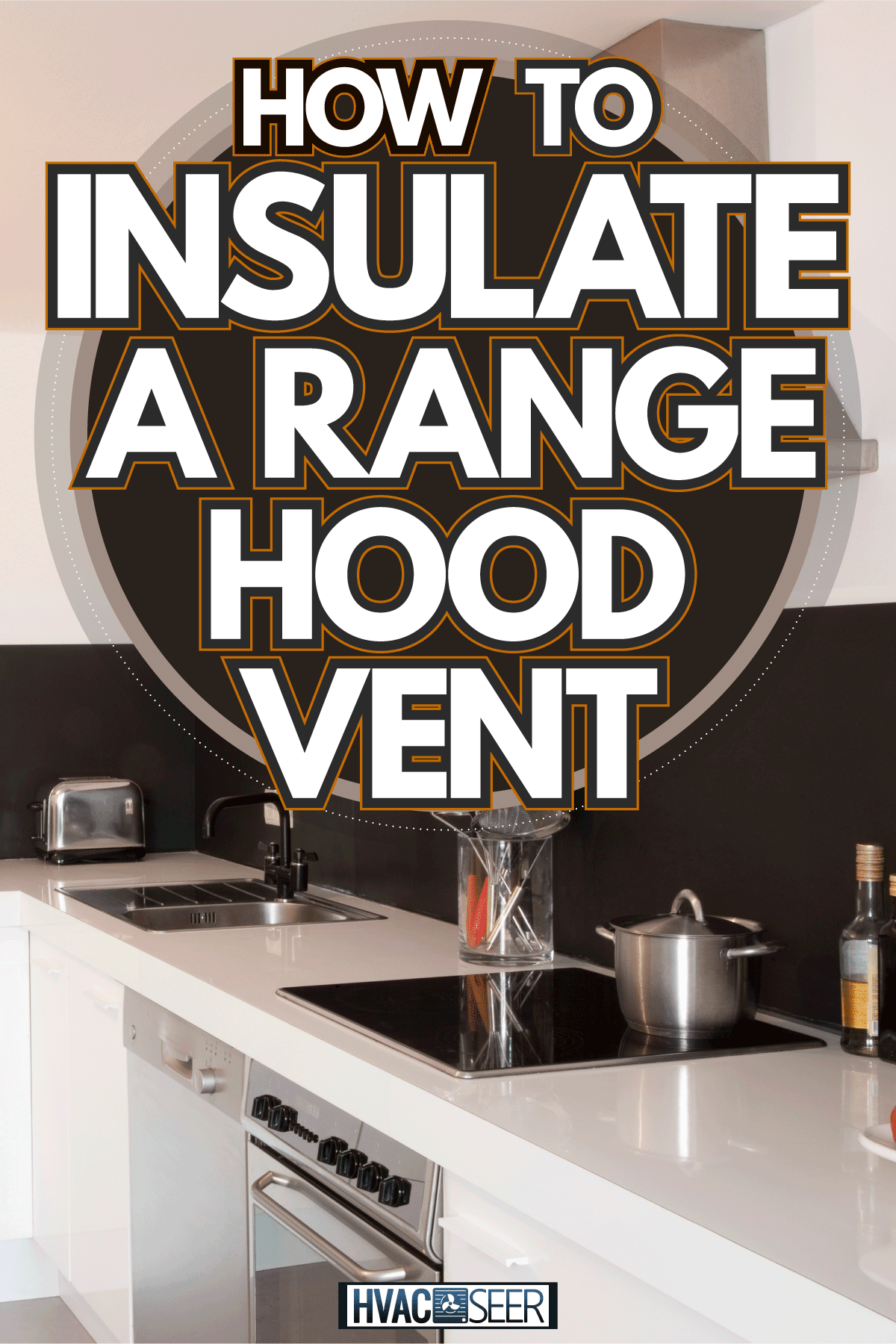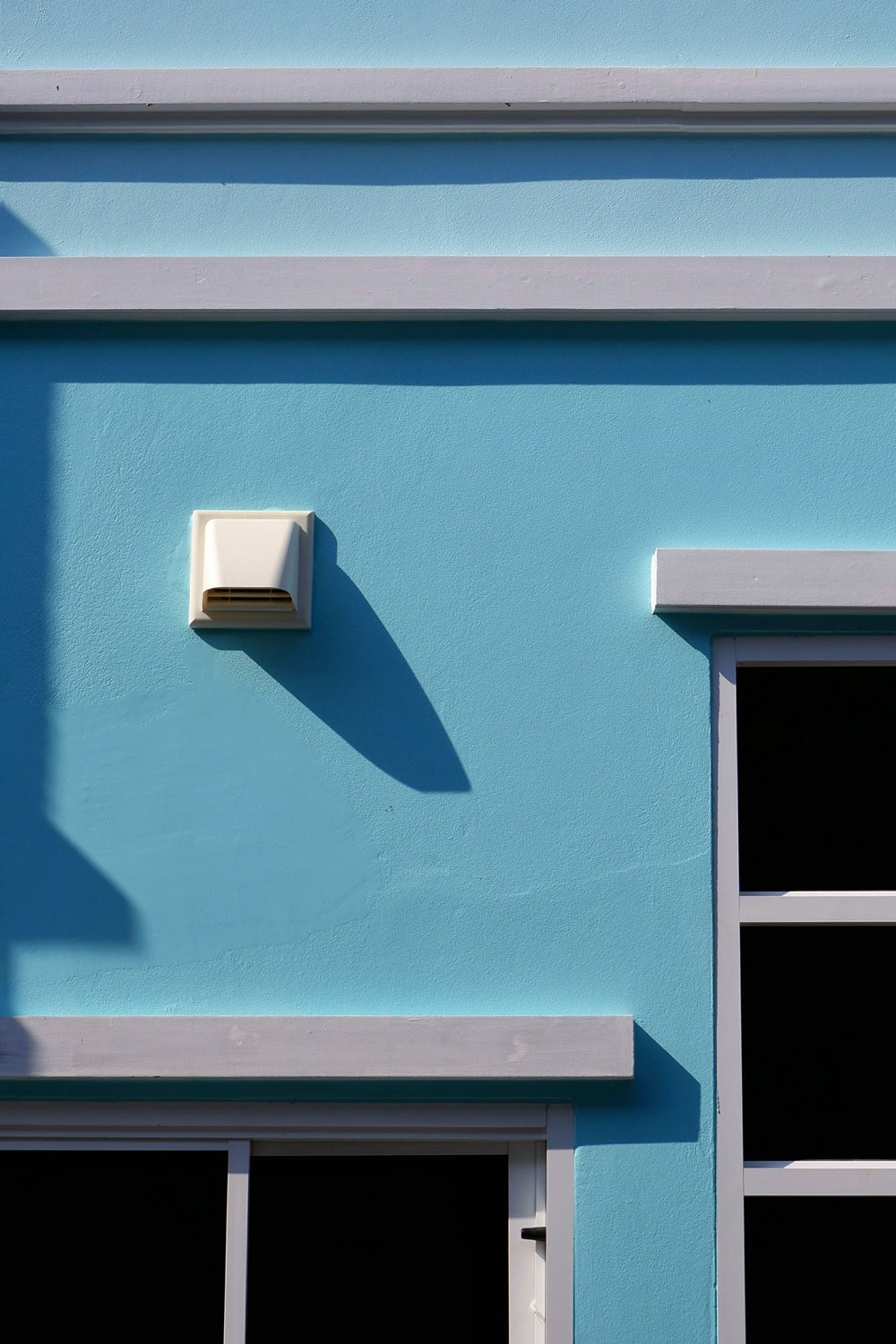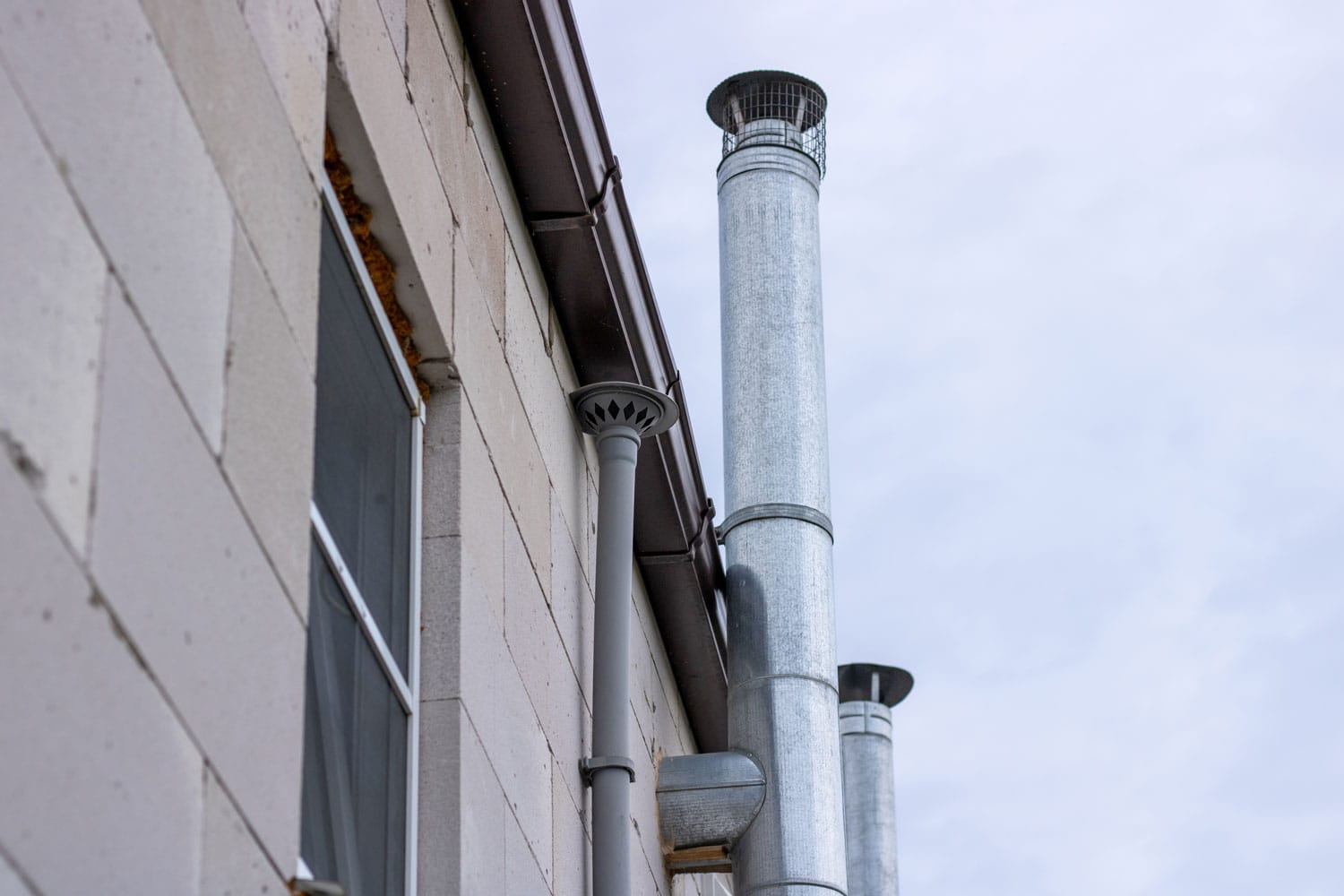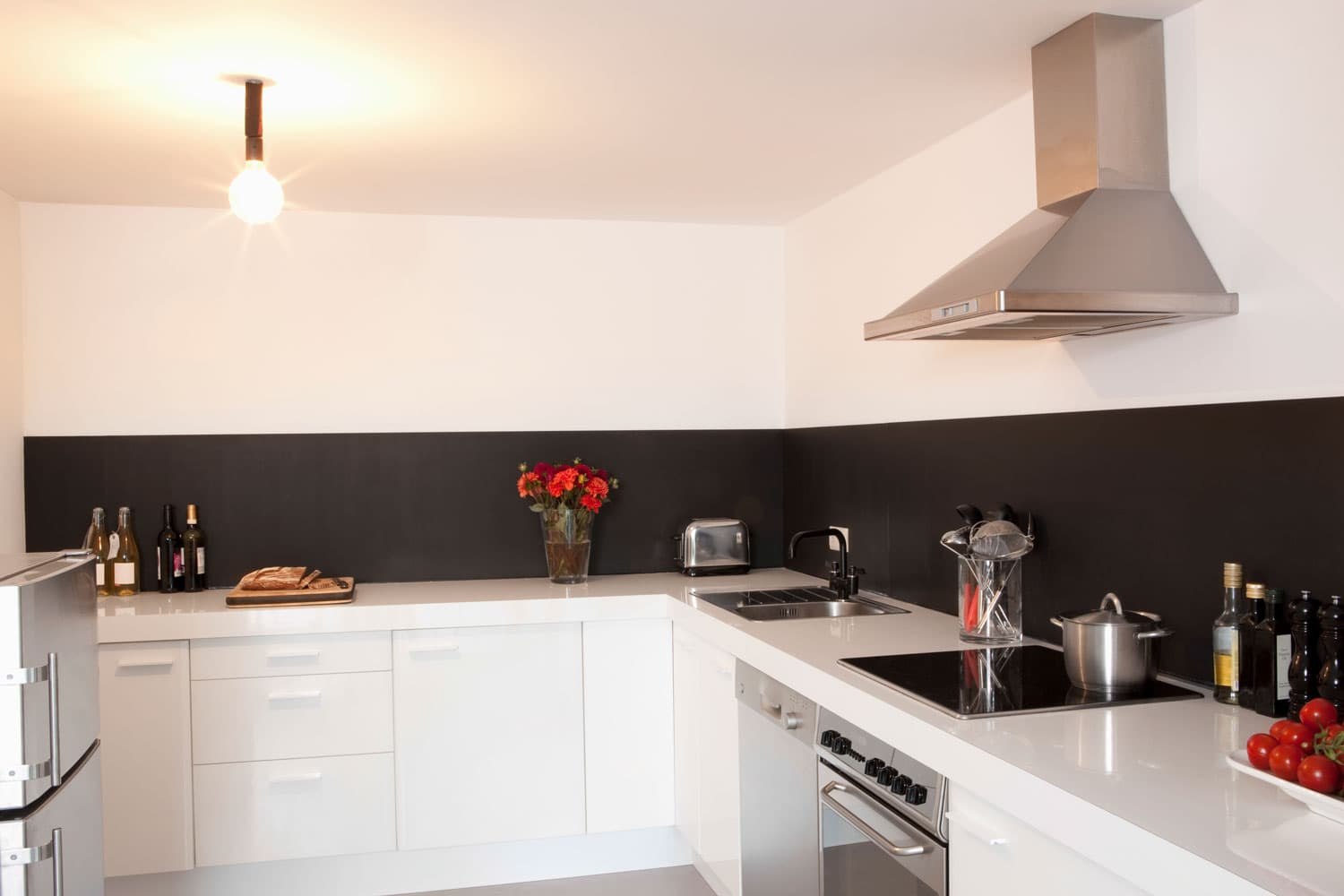Unfortunately, range hood vents are often poorly air sealed and insulated. This gives unconditioned air a way into your home. Knowing this, you might be wondering how to insulate a range hood vent. In this post, we combine industry professional knowledge and up-to-date research to answer your question.
Insulating a range hood vent is a relatively easy way to improve home air sealing and overall R-value. To accomplish this task, follow these general directions:
- Shut off vent circuit breaker
- Gain access to vent opening
- Insulate around vent opening
- Reassemble vent area
- Caulk if needed
Keep reading the rest of this post for details on each of the above steps. This guide includes all you need to know to finally do away with that pesky range hood draft. To conclude, we'll answer several questions related to the topic of this post. Without further ado, let's get into it.

How To Insulate A Range Hood Vent
The goal of insulating a range hood vent is to insulate the actual opening where the range hood is vented to the outside of your home. When done carelessly or as a remodel, it is common for builders to poorly insulate around the vent itself.
Other times, the vent insulation may fail over time due to pest activity or simple insulation settling. Either way, you will know this project is necessary when you feel outside air flowing in around the range hood vent.
Remember, small holes like one around a range hood vent have an outsized effect on the cost of heating and cooling your home. Thus, the effort and supplies it costs to insulate this area are likely to be fully paid off in utility bill savings.
1. Shut off Vent Circuit Breaker
Whenever you work with appliances that are hardwired into your home, it is important to take steps to reduce the risk of electric shock.

For this project, all you will need to do is flip the breaker that controls the range hood. Often, the hood may have its own dedicated breaker. Other times, the range hood may be wired onto a breaker with other kitchen appliances, outlets, or switches.
2. Gain Access To Vent Opening
Generally, you can either gain access to the vent opening from inside the home or outside of the home. If the vent is located in a wall, it is almost always easiest to gain access from outside. However, if the vent is located in your roof, gaining access from inside is the best choice.
Take note that, in terms of air sealing and insulation, it is best to insulate the vent or duct at the point where it exits the conditioned space for an unconditioned space. Sometimes, this may be a ceiling into an unconditioned attic.
Here, we'll cover how to access the range hood vent opening from outside of a wall, from inside of a wall, in an attic, and in a roof.
Outside of a Wall
As mentioned above, accessing your vent from an outside wall is by far the least labor-intensive option. However, if your vent is not easily accessible and you have to use a ladder, proceed with caution and be sure to get an assistant to hold the ladder steady.

Once you reach the vent, there is generally a cover of some sort that you can remove either with a screwdriver or a pry bar. If you have to use a prybar, be careful not to damage the cover itself or the surrounding siding.
Once the cover is removed, you should have at least a small amount of access to around the vent. Fortunately, this small amount of access is all you need to add the insulation.
Inside of a Wall
Accessing the range hood vent from inside of a wall first involves locating exactly where the vent exits the home. In most cases, this is either directly behind the hood or above the hood in the back of a cabinet.

Now, you will need to remove any appliances or objects that are obstructing your access to the vent opening.
If you have to remove the range hood itself, be very cautious and recruit an assistant to help with this sometimes heavy task. It involves removing any attachment brackets or screws and unhooking the power with an easy connect switch.
Often, you will want to only pull the hood out a small amount to gain access to the vent without actually removing the range hood's power. When you do this, you may be able to set the hood on a stool or other support while you perform the insulation.
If the vent is behind a cabinet, first attempt to remove the cabinet element and any covers that obstruct access to the vent opening. If this is not possible, you may have to use a small saw to cut your access. This is not the ideal method and is only advisable if the cut will be well hidden in a cabinet.
Attic
For attics, your best bet is to insulate the vent where the duct enters the attic from the conditioned space below. First, enter the attic with the proper eye, breathing, and body protection.
Click here for eye and breathing protection from Amazon.
Once you have located your range hood vent duct, you will likely need to push or set aside some insulation to access the area around the vent itself.
Roofs
Only when the range hood vent is in a roof that separates the conditioned space from the outside should you insulate on this surface. Since roofs protect our home from the elements, it is wise to only access the vent from the inside so as not to disturb the roof integrity.
Generally, all you will need to do is remove any covers that trim out the vent to gain access. Sometimes, you may also have to remove cabinets or parts of cabinets.
3. Insulate Around Vent Opening
Once you have access to the vent opening, the easiest insulation method is to simply spray foam around the vent. For most vents, all you will need is a single spray foam can. Use the versions with a straw applicator to facilitate spraying around the whole vent and in tight areas.
Click here for spray foam from Amazon.
This closed-cell insulation doubles as an air barrier, so it's sure to stop wayward breezes. Further, the foam expands which makes it very appropriate for filling unusually sized spaces. Take note that if you over apply the expanding foam, it may damage your drywall or ooze out into the living space.
To get a feel for how the foam applies, first spray some on a piece of waste paper or cardboard. Then, simply follow the directions on the spray foam can, and fill the space around your range hood vent.
4. Reassemble Vent Area
Now that you have insulated your range hood vent, all that is left is to reassemble the area. To do this, simply reattach each element in the opposite order that you removed them. If you bent any nails or covers, it is probably worth buying new materials for a neater finished product.
5. Caulk If Needed
If you removed any outside covers, it is likely a good idea to caulk around the top and sides of that cover. This step will ensure that moisture cannot get behind the cover, through the vent opening, and into your walls.
Click here for caulk from Amazon.
How do I keep cold air from coming in my stove vent?
If you have cold air coming in your stove vent, first take the steps above to insulate around your vent. This will stop any air that comes around the vent. Second, you will want to make sure that the vent itself is dampered.
Click here for a dampered exterior vent from Amazon.
Dampers can usually be added to existing vents. However, it is sometimes the case that you will have to remove the old undampered vent assembly and add a new dampered vent assembly.
What is a damper in a range hood?
A damper in a range hood is a flap that is designed to only open when air comes from one side. Thus, when the range hood fan turns on, the damper opens.
On the other hand, when the range hood is off and no air is coming from inside, the damper will close. This means that wind and drafts will not be able to enter the range hood duct and blow into your home.
Is a damper necessary for a range hood?
Yes, a damper is very important for a range hood. Without a damper, the hood vent will be a constant source of unconditioned outside air that will cost you both in comfort and utility bills.
Do range hoods have to be vented outside?

Yes, and according to the US Department of Housing and Urban Development, it is very important to vent range hoods outside.
The greasy hot air that the range hood is designed to collect and expel will damage your home if left unvented. Thus, without an outside vent, the very purpose of a range hood would be defeated.
This means that you cannot simply vent the range hood into an attic or wall. The moist, warm, greasy air will lead to mold, rot, and other home issues.
In Closing

In this post, we covered how to insulate a range hood vent. We provided step-by-step directions that apply to a wide variety of range hood configurations. To conclude, we answered several questions related to the topic of this post. Good luck!
To learn more about insulating specialty areas around your home, take a look at these other articles:
How To Insulate Around Microwave Vent




